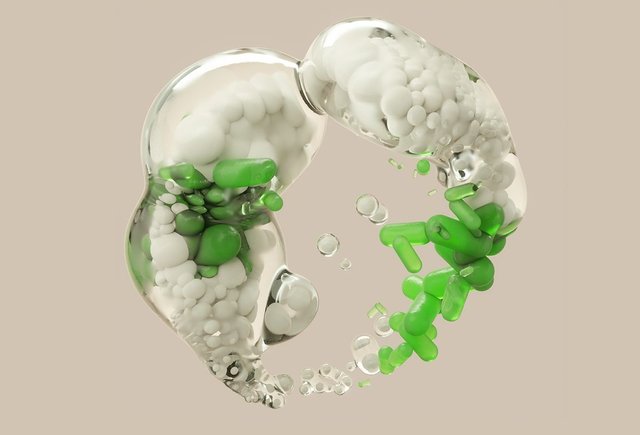Biologists are on the Ultimate Quest: To Create Life From Scratch
Scientists for over 20 years have been on a quest. That quest has brought about a revolution in biology and brought techniques forward that have been spun out into real products for people. However, that quest still remains as yet unfulfilled. That quest would make Mary Shelley proud: biologists are seeking to create life from scratch and they have made significant progress.
In the early 2000s, scientists started to change how they approached genetic engineering. They wanted to move away from the techniques and approaches of the past. What they wanted to do instead was to apply engineering principles to genetic engineering rather than more traditional biochemistry. The intent was to first create libraries of useful organelles and other intracelluar parts. Then they hoped to make actual biological 'machines' that would act in specific roles.
To be sure, the changes had deeper roots in papers that came from the 1970s, but science is not a linear path. Approaches come and go. As recent events in the machine learning and 'artificial intelligence' fields have shown, sometimes older techniques come back into use when there is a use for them.
Synthetic biology has already produced products and been spun out into companies. Biofuels and malaria treatments developed by Amyris use synthetic biology techniques to be produced. Gingko Bioworks produces bacteria for industrial applications. Synthetic Genomics is another. There are many, many others. However, none of these are pursuing the Frankesteinian effort to produce life from scratch.
One of the leaders of that effort is the controversial Dr Craig Venter. He has been pursuing the effort to create a completely artificial organism since the early 2000s. In 2010, Dr Venter's J. Craig Venter Institute synthesized a bacterium's complete DNA sequence from a computer program, having built it block by block until it was complete. The Institute then transplanted the DNA into a bacterium that had its DNA stripped out. The new bacterium was, in fact, viable and successfully reproduced. Since then, the Venter Institute has been working on improved versions and in 2016 unveiled a version dubbed Syn 3.0 with a much reduced genome, having removed genetic code unnecessary for the artificially created bacteria to live. The bacteria is viewed as a new species, Mycoplasma laboratorium.
Mycoplasma laboratorium is considered a partially synthetic life form. Scarab Genomics and the Hungarian Academy of Sciences have conducted similar, successful efforts, but derived their work from E. coli. However, even those are still only partially synthetic life forms. Scientists want to create a purely synthetic life form, no stealing or borrowing of parts. Everything made from scratch.
And they are making progress.
The Dutch seem to be leading the way, but other nations are doing the same sort of work. The American National Science Foundation is funding the project at the tune of $10 million annually. That's not a lot, to be honest, but it does show there is interest from the American government.
One of the main focuses right now appears to be creating a cellular membrane. Getting blobs to stay coherent and act as a membrane has been increasingly successful largely due to breakthroughs in microfluidics. This is a field where very precise control of fluids has been realized and 'bubbles' of lipids and other materials are routinely made. Primitive and crude bioreactors or the equivalent of various 'plasts' like a chloroplast have been made.
The other main effort has been on finding exactly the minimum number of genes necessary to have a living cell function. This ties back to the semi synthetic bacteria where they are slowly, but steadily editing out genes to see what is the absolute minimum. Once they have done so, they will start placing in all the genes to make exactly what the researchers want and only what the researchers one.
The holy grail is to take one of the artificial membranes, a genome created from scratch, place in it the artificial organelles and let it go. Well, not into the wild, but to have it dive and thrive in the laboratory. And then they can have it create and make drugs, chemicals and materials we can use and do so very cleanly.
Even if it comes out perfectly and there are no problems or misadventures, I have to wonder: would Mary Shelley be delighted? Or horrified?
How biologists are creating life-like cells from scratch
https://www.nature.com/articles/d41586-018-07289-x
Synthetic Biology
https://en.wikipedia.org/wiki/Synthetic_biology
Synthetic Life
https://en.wikipedia.org/wiki/Synthetic_biology#Synthetic_life
Amyris (company)
https://en.wikipedia.org/wiki/Amyris_(company)
Craig Venter
https://en.wikipedia.org/wiki/Craig_Venter
Synthetic Genomics (company)
https://en.wikipedia.org/wiki/Synthetic_Genomics_(company)
J. Craig Venter Institute
https://en.wikipedia.org/wiki/J._Craig_Venter_Institute
Mycoplasma laboratorium
https://en.wikipedia.org/wiki/Mycoplasma_laboratorium
Microfluidics
https://en.wikipedia.org/wiki/Microfluidics
